Meet Dr. M. Monirul H. Khan
First published in Sanctuary Asia,
Vol. 43
No. 2,
February 2023
Wildlife biologist Dr. M. Monirul H. Khan is celebrated across the world for his practical, determined defence of wild nature. His heart and head lie clearly with the people of Bangladesh, one of the most climate-threatened geographies in the world. Awards galore have come the way of this unique and effective defender of the biosphere, including the Bangabandhu Award for Wildlife Conservation (2015), a National Award presented by the Prime Minister of Bangladesh, plus a host of others, far too numerous to list. He is currently a professor in, and the Chairman of, the Department of Zoology, Jahangirnagar University in Bangladesh. He met Bittu Sahgal in Dhaka, where he conducted a session at the Balipara Foundation’s 10th Eastern Himalayan Naturenomics™ Forum 2022.
Monirul, today you are a voice for the planet not just in Bangladesh, but the whole world. Tell us a bit about your childhood and schooling?
No matter how loud it is, one person’s voice cannot go very far. If the same voice, however, is echoed by others, it can reach the farthest corners of this world. Therefore, it is crucial that we all raise our voices so that the natural world can survive.
I was born in Tangail, central Bangladesh, in 1974. I am the youngest of six children; I grew up with many cousins and friends in the neighbourhood. I enjoyed my childhood doing various things but, honestly speaking, not studying much. My first school was not far from home, but I had to cross a river using a narrow bamboo bridge, which was challenging.
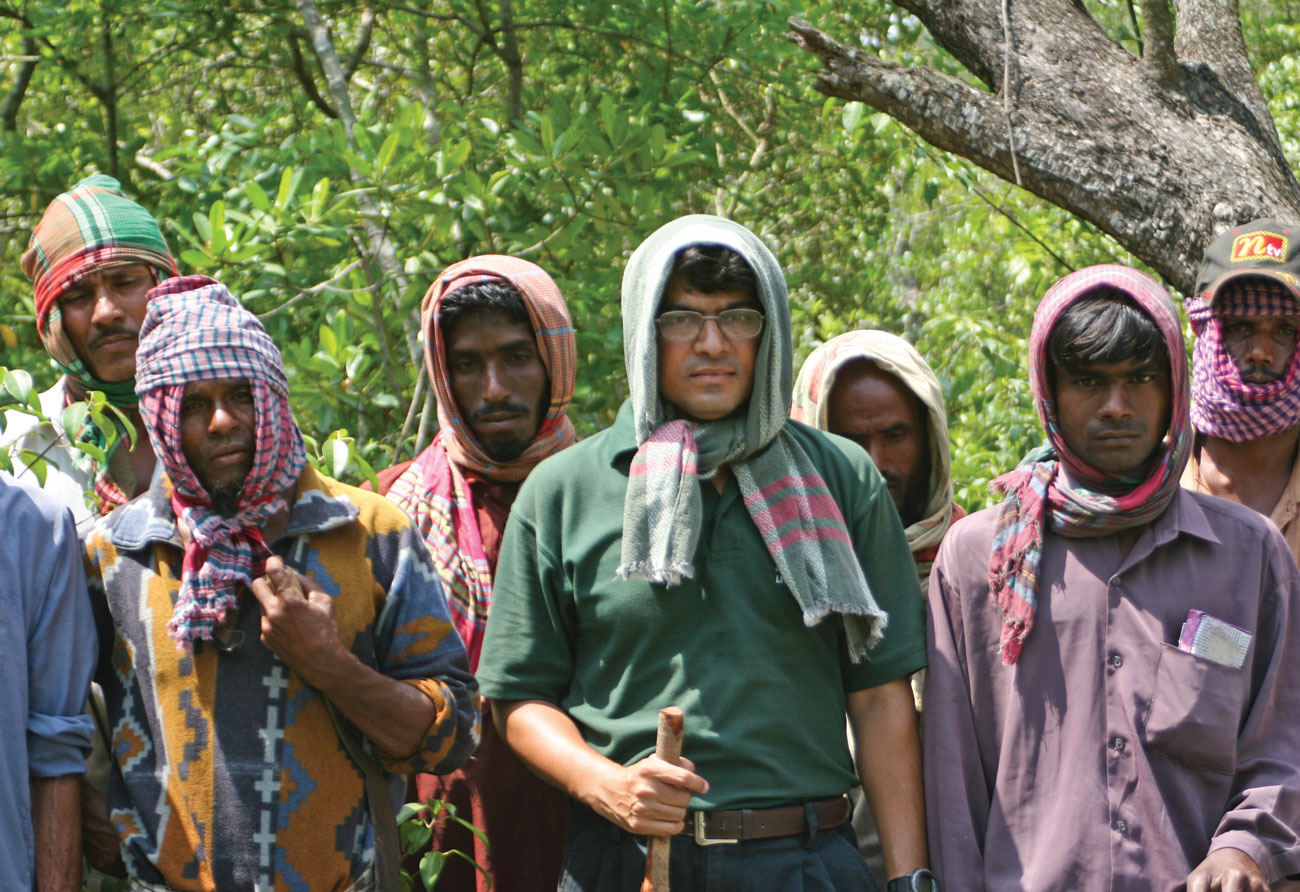
Seen here with honey gatherers in the Sundarban, Dr. Khan has been working on human-wildlife conflict issues that arise when living close to large wild carnivore habitats. Photo Courtesy: Dr. Monirul Khan.
And how did you wander into the wonderful world of nature conservation?
When I was a child, the stories of my father’s close encounters with tigers and other wild animals in the Madhupur forest in northern Tangail, when he was living there for his first job from 1949 to 1951, sparked my interest in wild animals. Moreover, the area I grew up in was surrounded by natural habitats, where I used to see wildlife. By the time I started college, I realised that Bangladesh’s wildlife was vanishing rapidly and unless we took serious action, many of the charismatic wild animals, including the tiger, would soon be extirpated. I decided to do something to ensure their survival.
And the Sundarban? How did your life lead you towards studying and protecting this, the world’s largest mangrove tiger habitat?
I first visited the Sundarban in 1995 when I was studying zoology at Jahangirnagar University. I was amazed to see the vast wilderness (that still exists) in a densely populated country. The grazing herds of chital, colourful birds and fresh tiger pugmarks drew my attention. I decided to devote myself to wildlife conservation, with a focus on the Sundarban – Earth’s best mangrove wilderness.
Your take on the Sundarban tiger’s fabled reputation as a man-eater?
I know some people don’t like the term ‘man-eater’, but we cannot avoid the fact that a few tigers in the Sundarban deliberately hunt and eat people. What is unique here is that even healthy tigers can turn into man-eaters. It is difficult to say how the man-eating behaviour originated, but I think tigers have learned to prey on humans as they might any other animal. ‘Human-wildlife coexistence’ is catchy, but for tigers or any large wild carnivore, coexistence should be avoided as much as possible to avoid conflict, and there should be some buffer areas between the domains of large wildlife and humans.
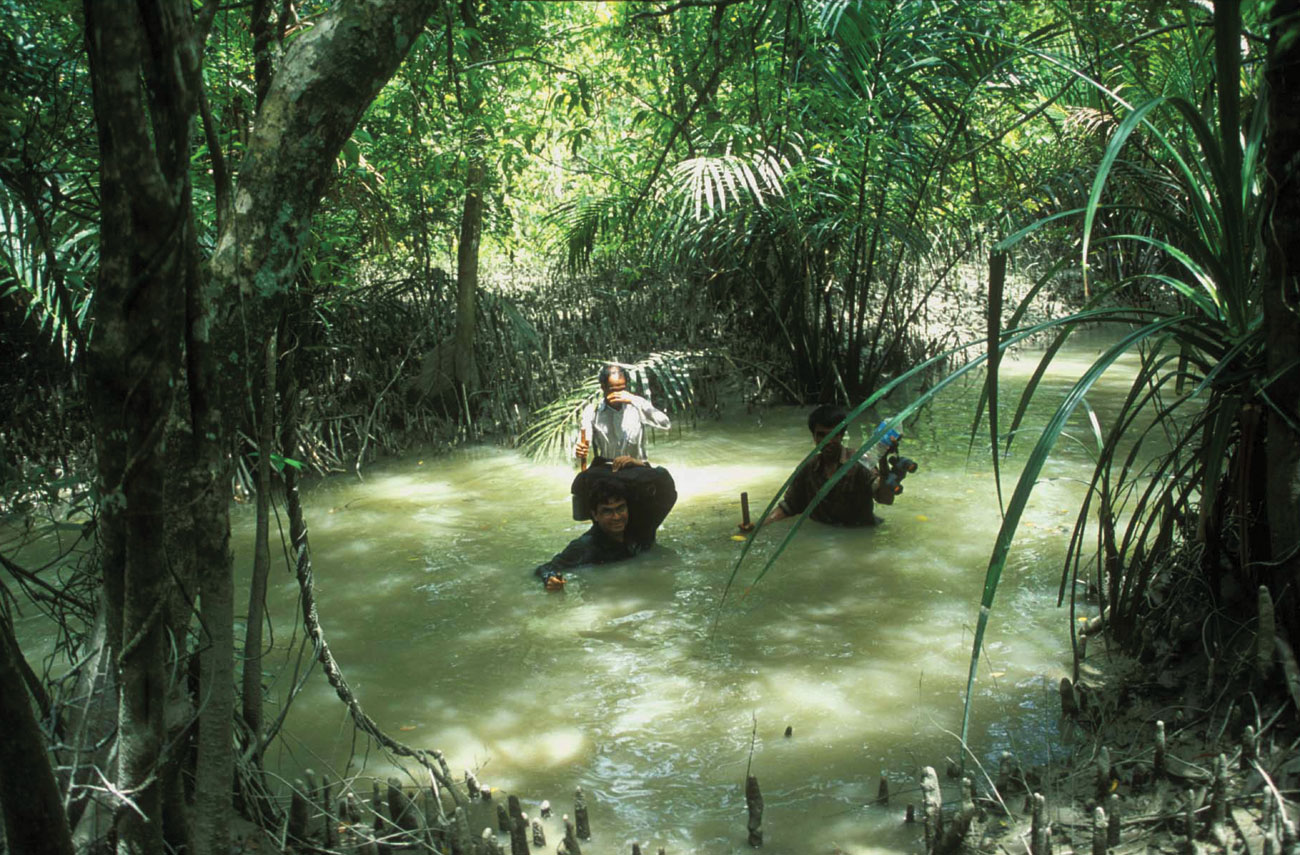
Dr. Khan and his team crossing a creek in Supati, Sundarban. The Sundarban forests are one of the most impacted areas from climate change and it is vital to act now, says Dr. Khan. Photo Courtesy: Dr. Monirul Khan.
Do you see any real hope that India and Bangladesh will work together with synchronicity regarding the management of the Sundarban?
If Bangladesh and India want to ensure the long-term conservation of the Sundarban and its tigers, collaboration is not an option, it is a must. This is because the Sundarban is one ecological unit shared by two countries; anything good or bad in one area will affect the other. In 2011, the governments of Bangladesh and India signed a memorandum of understanding on the conservation of the Sundarban, and a protocol on the conservation of the tiger in this mangrove forest. In the light of these two documents, I hope the two countries will take necessary steps to strengthen the collaboration.
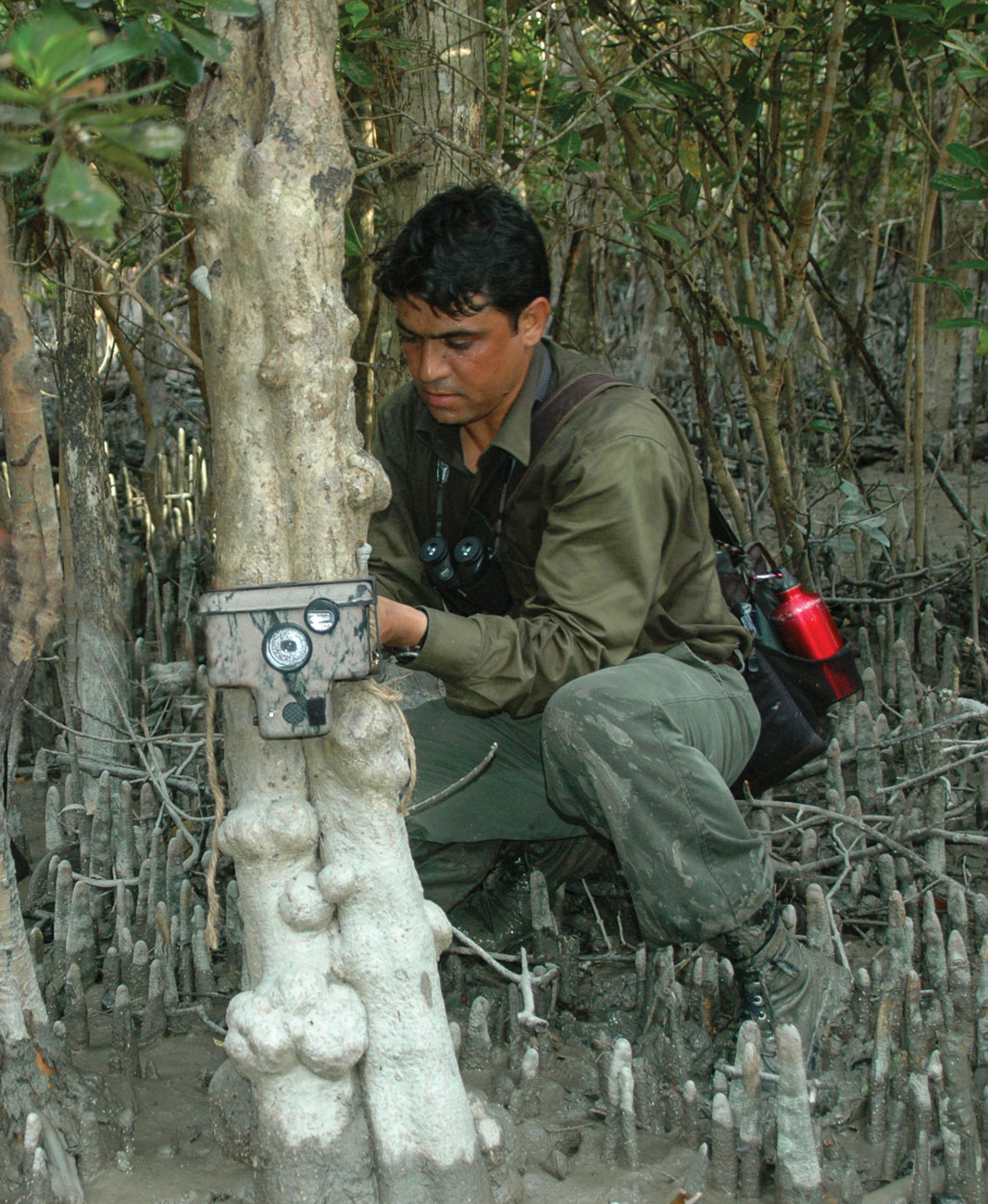
What is Bangladesh’s gameplan to deal with the inevitable impact of the climate crisis, which will deliver even more extreme and more frequent climatic events?
Bangladesh, particularly the Sundarban region, is one of the most impacted areas of climate change, although the country’s contribution to global warming is minimal. Bangladesh is committed to taking action and, with the formulation of Bangladesh Delta Plan 2100 and Mujib Climate Prosperity Plan, the country is on the right track to cope with the challenges of the climate crisis. Necessary funding from national and international sources, however, is crucial to implement these plans.
Are people living in the Bangladesh Sundarban aware of the risks from climate extremes?
There is no permanent human settlement in the Sundarban of Bangladesh, but there are villages, crop fields and shrimp farms along the northern boundary of the forest. The people are indeed living at the risk of climate extremes of various kinds, but they have nowhere to go. The climate extremes, however, would impact them more severely in the absence of the Sundarban forest, which serves as a natural barrier for cyclones.
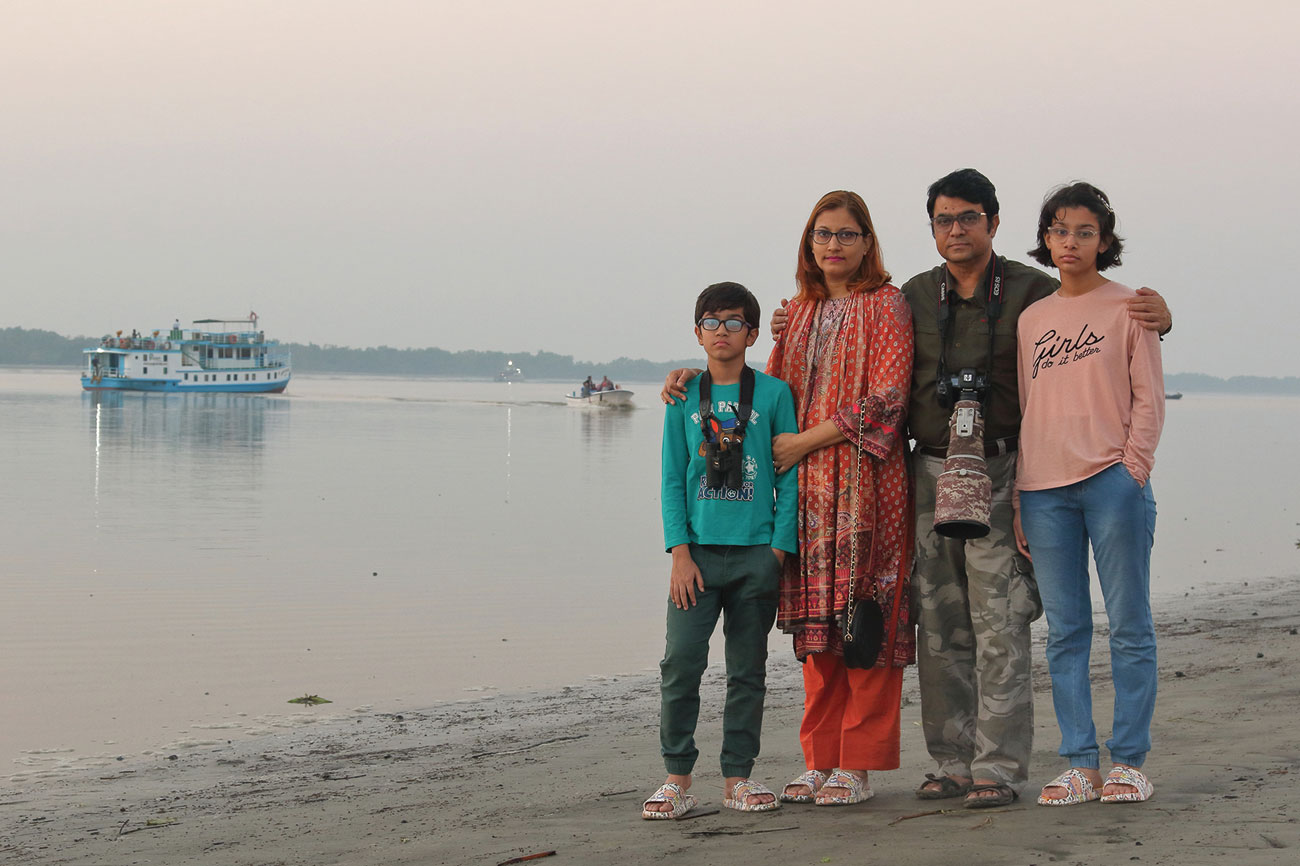
Dr. Khan and his family. His childhood interest in wildlife and nature blossomed into a deep commitment to protect his country’s natural heritage. Photo Courtesy: Dr. Monirul Khan.
Do you see northward migration being an inevitable result of the climate crisis?
Yes. I think the best adaptive measure for the Sundarban and the people living along its northern boundary is a gradual northward migration. If we look at the geological history of the region, we will see that earlier, the migration of the Sundarban naturally took place to adjust with sea levels, which is not possible in the present context since the extreme human use of land will not allow mangrove vegetation to take over new lands towards the north.
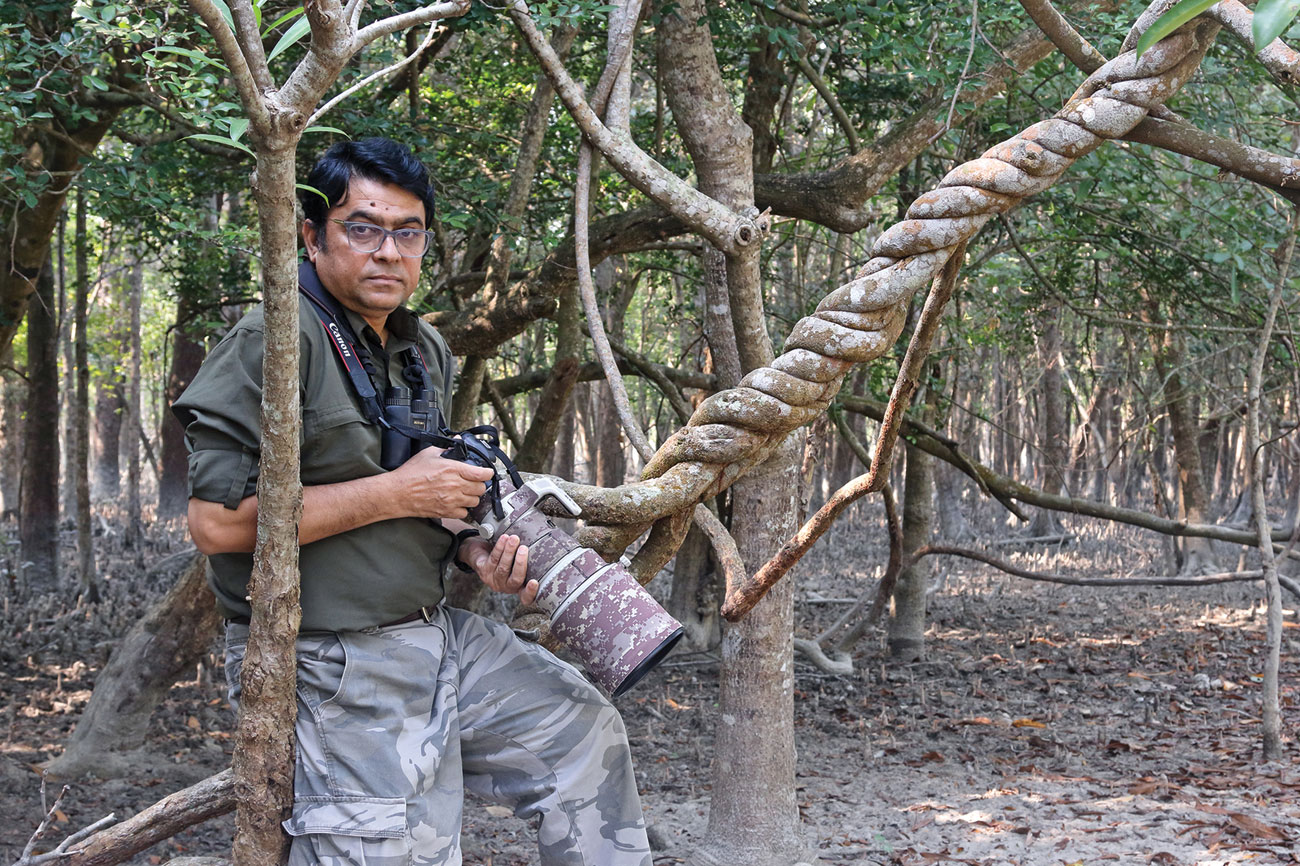
Dr. Monirul Khan’s doctorate thesis was on the ecology and conservation of the tiger in the Sundarban of Bangladesh. Photo Courtesy: Dr. Monirul Khan.
When we met in Dhaka at the Balipara Foundation’s Eastern Himalaya event, we spoke about the need to get children involved in issues concerning biodiversity and climate change. Do you see any possibility of working towards this objective in the near future? Sanctuary would love to collaborate.
Today’s children are tomorrow’s adults. If we can make them aware of the issues of biodiversity and climate change, we will surely have a better future. We must keep in mind that unwise human activities are the key driving force that have led not only to the climate crisis, but also to the extinction of many species of animals and plants. Sanctuary, in partnership with local organisations, can consider launching a transboundary awareness programme for the children living in the vicinity of the Sundarban.
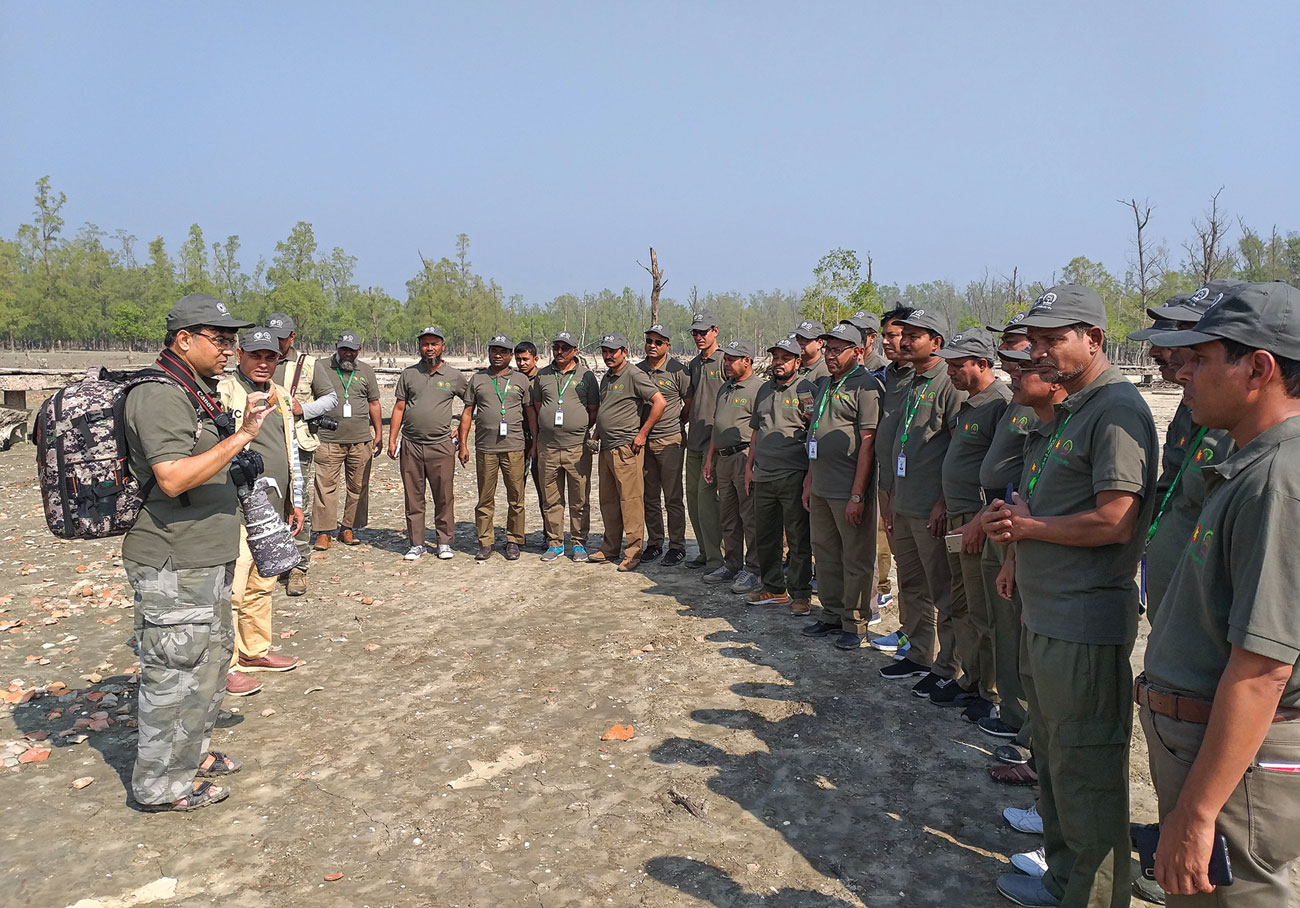
Dr. Khan training foresters in Katka, Sundarban East Wildlife Sanctuary, Bangladesh. Photo Courtesy: Dr. Monirul Khan.
Do you have a message for the children of Bangladesh... and India for that matter?
Conservation is a relay race, so whatever we achieve will be carried forward by our next generation. Today’s children are more aware of what is happening to the living world and, I believe, young leaders like Greta Thunberg will appear in South Asia and show us the way forward. The sacred land where Gautam Buddha – the greatest conservationist of all times – was born can give us modern day conservation champions. Each and every child has the potential to become one. I will be waiting to welcome them!







